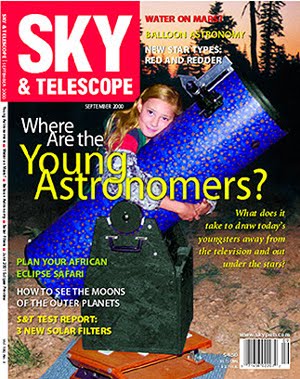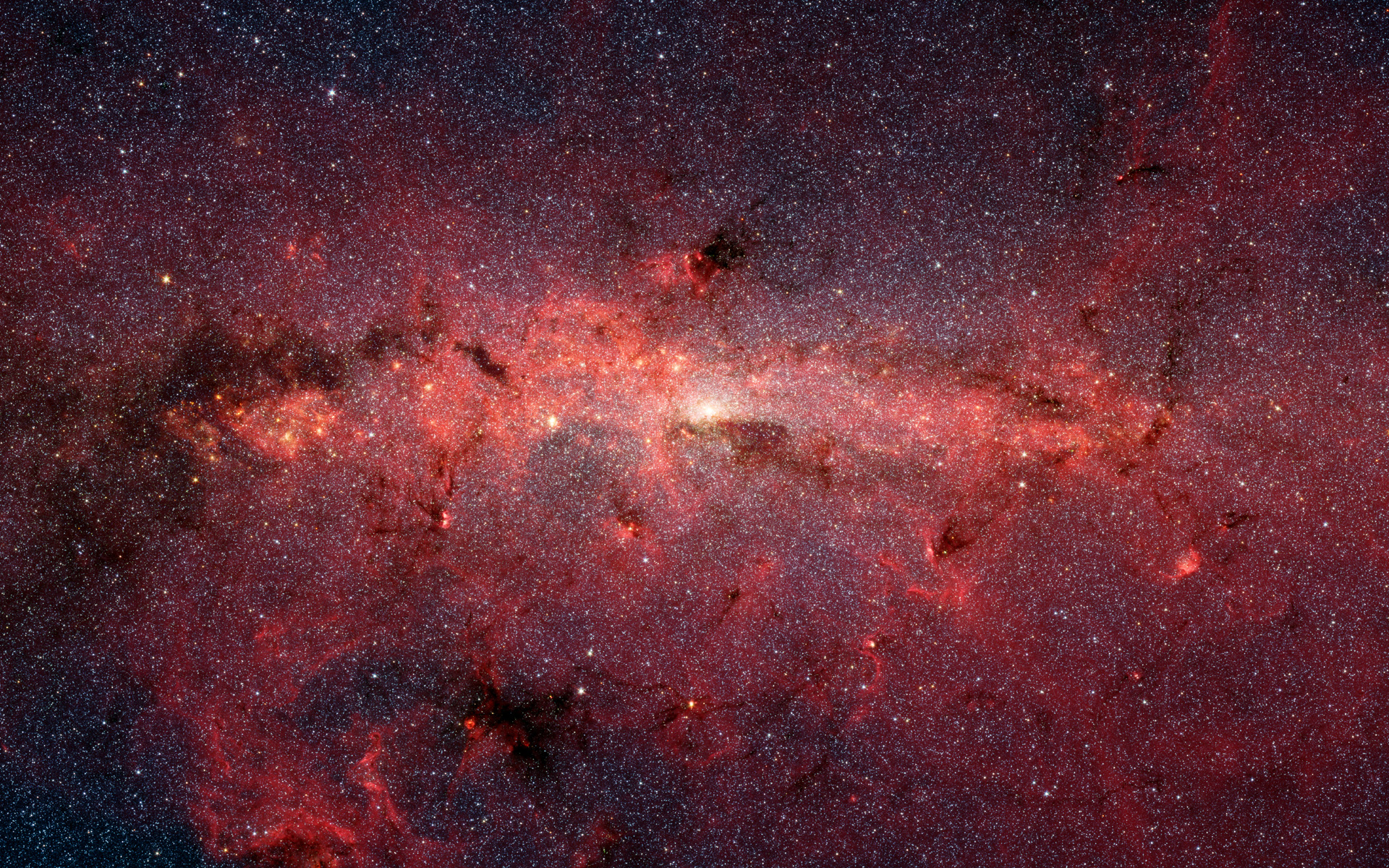I finally unpacked my 10" f/5.6 Dob from the short and soft night at Montebello last Saturday. 9 p.m. and the sky was just getting dark enough. With Telrad and 20 Nagler, Astro Cards in hand, I set out to see what was visible in a backyard devoid of neighbor's lights. That's right.... no lights. My back neighbors, who for the last few years had treated me to a fully illuminated view of their kitchen, are in mid remodel (ongoing now for 3 summers), and have their window boarded up, hopefully (it would be too good to be true) forever. :-)
I began the night in Ophiuchus, hunting NGC 6572, a mag 8.1 planetary nebula which was at first elusive. I star-hopped to the correct location, but saw only healthy stars. Realizing I might have more success with an OIII filter, I installed one and again looked in the eyepiece. Every star but one dimmed out. Aha! The bright star! A quick look at the Astro Card told me this was a tiny PN. After removing the filter, I looked again at the object. Knowing where to look, the color jumped out... spectacular... this fading star has an almost electric-emerald hue.
The next object too was a planetary, NGC 6210 in Hercules, placed high in the sky tonight. I've seen this one before, many times, but always had difficulty star-hopping to it. I did for a while tonight too, but then looking at the Astro Card realized it was an easy hop from 20-Gamma Herculis across to 27-Beta Herculis, and beyond almost the same distance to the correct field. This planetary seemed smaller than the prior one, but only because it was dimmer and a bit hazier, if that makes sense. It was not as brilliant green either, more olive. I was able to confirm this in the 20mm eyepiece, without a filter it would dim out with direct vision. It did that trick with both 20mm and 7mm eyepieces.
Probably the find of the night was NGC 6369 in the southern-most reaches of Ophiuchus. The serpent bearer was sitting almost horizontal to the horizon, and the section I was after was in the telephone lines, low in the south. I could barely make out the stars to hop with. Then I remembered this object was at the end of a curved chain of stars I use to identify Barnard's "E" (the Pipe Nebula, or the Horse). That did the trick. With the 20mm I was on the right field quickly. But the object, at mag 11.4, would not give itself up easily. I thought I saw a faint haze about 25' off a mag 6.0 star. I used an OIII and UHC filter to help bring out a brighter, but still faint smudge. The UHC seemed to offer a brighter view without really losing any detail. In went my 7mm eyepiece, with an Orion Ultrablock, rewarding me with a very good view of "The Little Ghost" ... one of the nicest little celestial glazed donuts you could hope to find. The obvious ring with its dark center was a treat for a backyard sky.
I've looked at IC 4665 in northern Ophiuchus a number of times before. Located in an area of the sky which is a now defunct "Bull" constellation. Taurus was not the only bull in the heavens. This open cluster is a rather hidden treat. Very large at almost 2/3's of a degree, it appeared to have maybe 30 stars, half being centralized, the other half stragglers clinging onto the outer reaches of the main group. My software program The Sky lists this at mag 4.0, so you can imagine it stands out.
The Astro Cards dealt me a quick trip to Delphinus. This little water creature really has some nice detours. I think the Blue Flash Nebula that someone pointed out to me Saturday night is in that area. But this trip, I was after NGC 6934, a globular cluster trailing the dolphin's tail. The cluster is not large, at about 6', but it is bright, with a definite brighter core, diffusing out evenly. With the 7mm eyepiece, its brightest members were resolving. A bright star marks the position of the globular, sitting foreground to the cluster a small 4' to the west.
I next looked north, into Vulpecula. Other than for M27, I never look in this little piece of sky. But, I was rewarded. NGC 6940 is a beautiful open cluster, with 50+ members in a 30' haze. A few bright members sprinkle the field, with close to half the remaining stars dim by comparison, the other half what I would call faint. This cluster is absolutely worth the trip. I would guess the center 10' of the cluster is very rich.
My next Astro Card pointed me at the North American Nebula, but really, why bother from in town? The card also showed NGC 7027, a very interesting planetary that Steve Gottlieb has shown me with high power in his 17.5" Dob recently. In Steve's scope, the object was bi-lobed, and very unusual looking. However, tonight I kept my 20mm in and enjoyed the gorgeous color. If you remember the Superman movies with Chistopher Reeves, this planetary must be made of Kryptonite, as that seemed the color of its bright glow. Small and a visual mag 8.5, this is a good in-town object.
This was not going to be a long night out back. In between eyepiece views, I was herding our cats into the house. My dog was doing his best to get outside where he could misbehave in the dark, eating things I hesitate to mention in polite company. My son, 16 years old in a few months, was in and out of our kitchen, feeding his hollow leg, flashing the lights on and off. I had a Mexican Coffee, which I'm sure enhanced my observing one way or another. But ahhhhh.... the darkness out back when *our* lights were off. Somebody, please, make sure my neighbors keep that plywood over their kitchen window! ;-)
My final two objects for the night were as disparate as could be. The first was an open cluster in Cepheus. When I think open cluster, I usually think of a large group of stars with many bright members. But NGC 6939 was not in that mold. The cluster was small, and took repeated efforts star-hopping to get a first glimpse. The cluster is not much larger than the previously mentioned globular in Delphinus. It was faint too, with perhaps 6 to 10 bright(er) members peeking out among many, many dimmer components. Helping to locate the object was a mag 7.1 star 14' north. When I pumped up the magnification with my 7mm, I sensed a dim hazy knot of stars to the EENE of the main group contained in the cluster. This open cluster is a bit of a challenge in town, but worth the effort. Don't let anyone fool you, opens can be very interesting, they have more personality than most galaxies.
In contrast to the effort expended on NGC 6939, the last object of the night was pure dessert. NGC 6543 is more commonly referred to as the "Cat's Eye Nebula" in Draco. The roof of my house is north of my backyard, and I had just enough clearance to haul in this object. To say it is bright is an understatement. This planetary nebula was easy to identify by sweeping the neighborhood. What a contrast to the near-stellar planetaries I'd looked at earlier in the evening! A bright star (okay, so mag 9.7 isn't really bright) sat 3' away, a nice contrast in color with the turquoise marble. This object was larger than most other planetaries tonight, other than NGC 6939, but comparing its brightness, the Cat's Eye is the easy winner. Under more mag with the 7mm, there appeared to be an annular quality to this nebula, in a N/S direction.
I had run out of cards. It was after 11 p.m. and life has been so busy lately, I decided to cash in my chips and walk away a winner.
There is a lot to see from a suburban backyard. Ten short steps to the universe... leaving the TV, computer and walls behind, to look up at a starry night and feel the world melt away. I'll pull out my cards again some night soon.
The sky is a great companion. Unique, mysterious, yet familiar. I don't know how people can avoid being captured by the magic of this hobby.












No comments:
Post a Comment